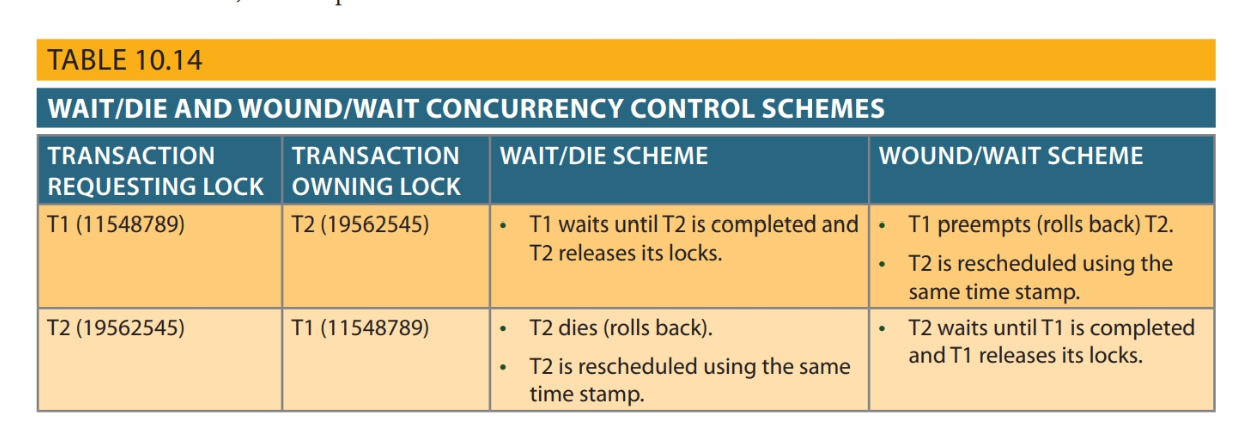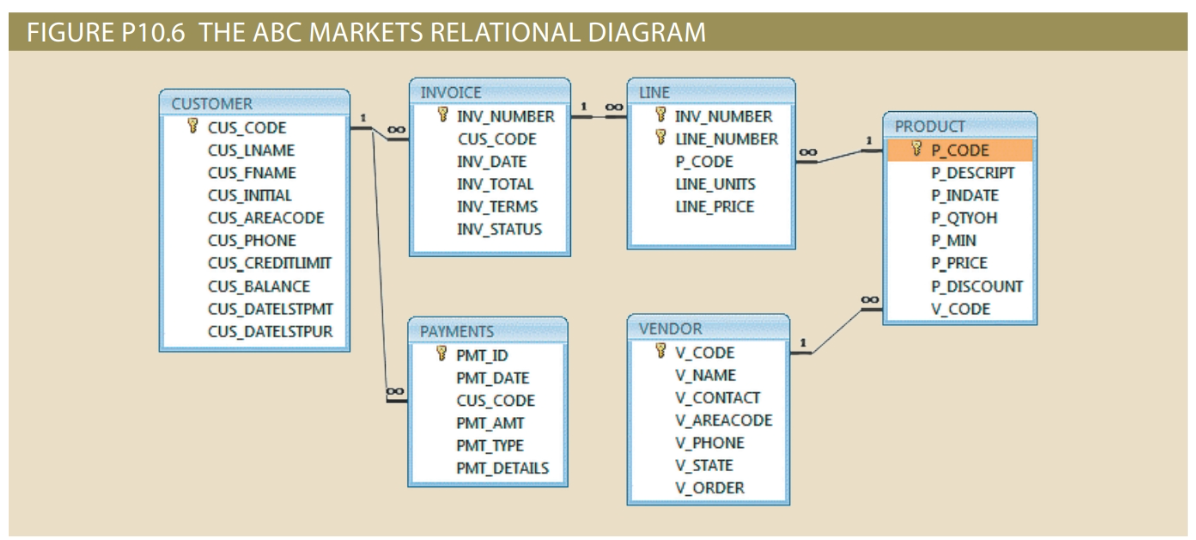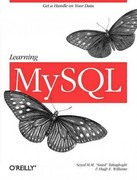Question
7. Create a simple transaction log (using the format shown in Table 10.14) to represent the actions of the transactions in Problems 6a and 6b.
7. Create a simple transaction log (using the format shown in Table 10.14) to represent the actions of the transactions in Problems 6a and 6b.

Questions 6A and B for reference.
ABC Markets sell products to customers. The relational diagram shown in Figure P10.6 represents the main entities for ABCs database. Note the following important characteristics:
A customer may make many purchases, each one represented by an invoice.
The CUS_BALANCE is updated with each credit purchase or payment and represents the amount the customer owes.
The CUS_BALANCE is increased (+) with every credit purchase and decreased () with every customer payment.
The date of last purchase is updated with each new purchase made by the customer.
The date of last payment is updated with each new payment made by the customer.
An invoice represents a product purchase by a customer.
An INVOICE can have many invoice LINEs, one for each product purchased.
The INV_TOTAL represents the total cost of the invoice, including taxes.
The INV_TERMS can be 30, 60, or 90 (representing the number of days of credit) or CASH, CHECK, or CC.
The invoice status can be OPEN, PAID, or CANCEL.
A products quantity on hand (P_QTYOH) is updated (decreased) with each product sale.
A customer may make many payments. The payment type (PMT_TYPE) can be one of the following:
CASH for cash payments.
CHECK for check payments.
CC for credit card payments.
The payment details (PMT_DETAILS) are used to record data about check or credit card payments:
The bank, account number, and check number for check payments.
The issuer, credit card number, and expiration date for credit card payments.
Note: Not all entities and attributes are represented in this example. Use only the attributes indicated.
Using this database, write the SQL code to represent each of the following transactions.
Use BEGIN TRANSACTION and COMMIT to group the SQL statements in logical transactions.
a. On May 11, 2016, customer 10010 makes a credit purchase (30 days) of one unit of product 11QER/31 with a unit price of $110.00; the tax rate is 8 percent. The invoice number is 10983, and this invoice has only one product line.
b. On June 3, 2016, customer 10010 makes a payment of $100 in cash. The payment ID is 3428.

Step by Step Solution
There are 3 Steps involved in it
Step: 1

Get Instant Access to Expert-Tailored Solutions
See step-by-step solutions with expert insights and AI powered tools for academic success
Step: 2

Step: 3

Ace Your Homework with AI
Get the answers you need in no time with our AI-driven, step-by-step assistance
Get Started


